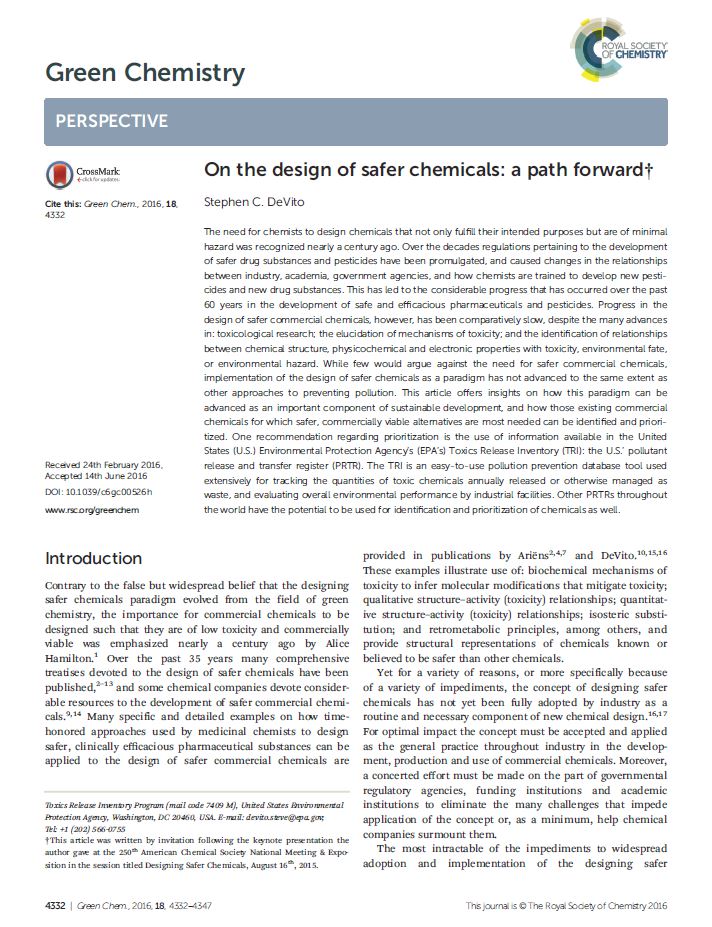This article offers insights on how existing commercial chemicals for which safer, commercially viable alternatives are most needed can be identified and prioritized as an important component of sustainable development. One recommendation regarding prioritization is the use of information available in the United States (U.S.) Environmental Protection Agency’s (EPA’s) Toxics Release Inventory (TRI): the U.S.’ pollutant release and transfer register (PRTR). Other PRTRs throughout the world have the potential to be used for identification and prioritization of chemicals as well.
The US EPA has established a process for identifying existing chemicals that because of their toxicity or exposure potential warrant prioritization for further in-depth review and possible risk management action. Currently, there are 90 chemicals that have been identified for additional review through this process. These chemicals are known as US EPA Work Plan chemicals, or US EPA Priority chemicals. Of the 90 chemicals, 60 are included on the TRI list of toxic chemicals. The source reduction barrier “No known substitutes or alternative technologies” is claimed more frequently for the TRI chemicals that are also Work Plan chemicals than for the TRI chemicals that are not Work Plan chemicals. For the 2014 reporting year, of the 72,246 TRI reports that included a waste quantity, 24,586 (nearly 30%) were for TRI chemicals that are also Work Plan chemicals. Of these 24,586 Form R reports, 3,531 (14%) reported a barrier to source reduction, and 1,555 (44%) of which claimed “No known substitutes or alternative technologies.
These facts are particularly significant given that the 60 Work Plan chemicals represent a small portion of the total number of chemicals included on the TRI chemical list, but the aggregated production related waste quantities reported for the Work Plan/TRI chemicals is disproportionately much larger than that for the remaining TRI chemicals. The same situation may very well exist throughout the world on these same chemicals. Many of the chemicals that are Work Plan chemicals and included on the TRI list of toxic chemicals are also included on the pollutant (chemical) lists of PRTR systems implemented in other countries or regions.
